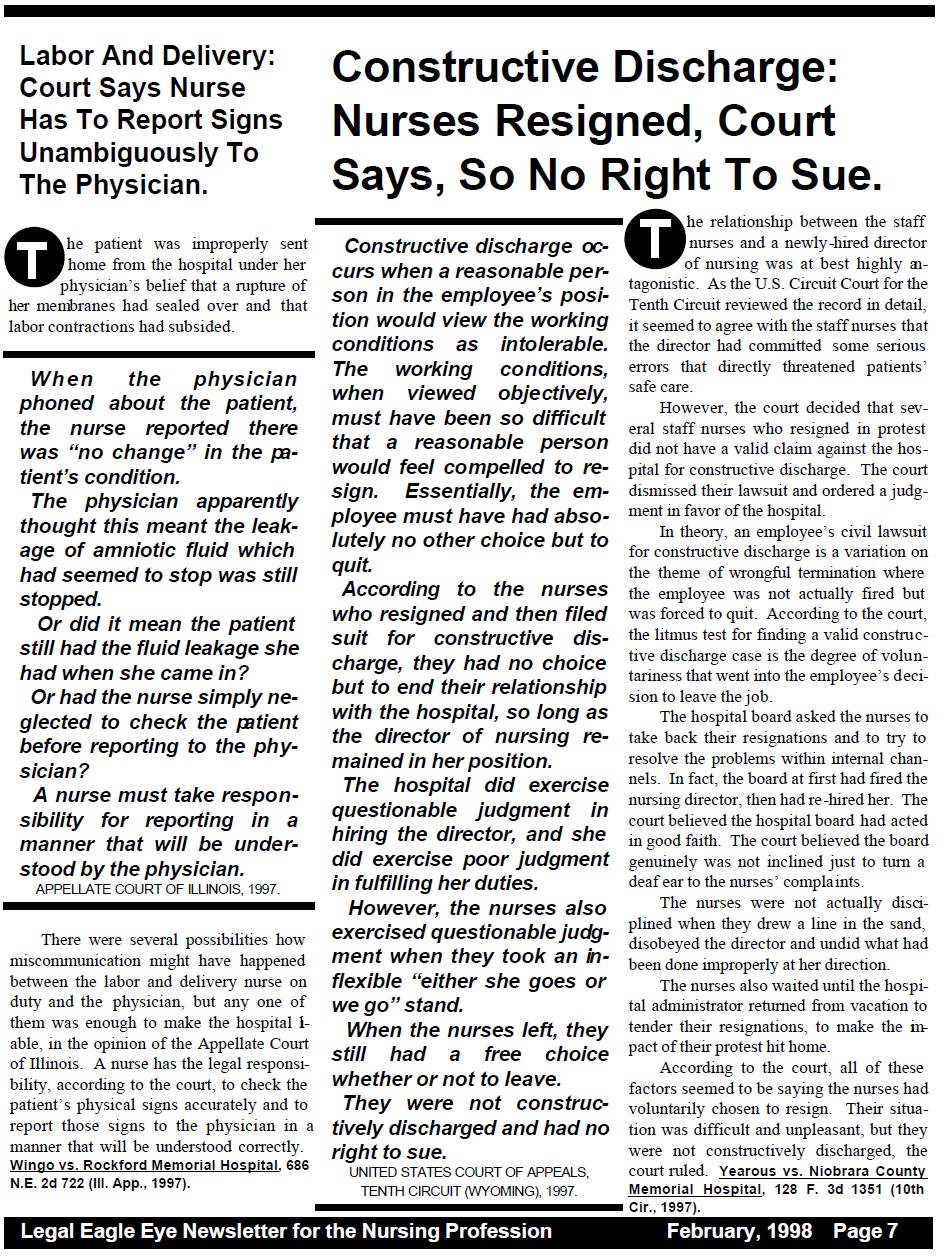
|
Click here for a complimentary copy of the current issue of Legal Eagle Eye Newsletter for the Nursing Profession |

Constructive Discharge: Nurse Resigned Job, Court Says No Right To Sue
Quick Summary: The nurses resigned and sued for constructive discharge, claiming they had no choice so long as the director of nursing remained. However, the court said they simply quit and had no right to sue.
Constructive discharge occurs when a reasonable person in the employee’s position would view the working conditions as intolerable. The working conditions, when viewed objectively, must have been so difficult that a reasonable person would feel compelled to resign. Essentially, the employee must have had absolutely no other choice but to quit.
The hospital did exercise questionable judgment in hiring the director, and she did exercise poor judgment in fulfilling her duties.
However, the nurses also exercised questionable judgment when they took an inflexible "either she goes or we go" stand.
When the nurses left, they still had a free choice whether or not to leave.
They were not constructively discharged and had no right to sue.
UNITED STATES COURT OF APPEALS, TENTH CIRCUIT (WYOMING), 1997.The relationship between the staff nurses and a newly-hired director of nursing was at best highly antagonistic. As the U.S. Circuit Court for the Tenth Circuit reviewed the record in detail, it seemed to agree with the staff nurses that the director had committed some serious errors that directly threatened patients’ safe care.
However, the court decided that several staff nurses who resigned in protest did not have a valid claim against the hospital for constructive discharge. The court dismissed their lawsuit and ordered a judgment in favor of the hospital.
In theory, an employee’s civil lawsuit for constructive discharge is a variation on the theme of wrongful termination where the employee was not actually fired but was forced to quit. According to the court, the litmus test for finding a valid constructive discharge case is the degree of voluntariness that went into the employee’s decision to leave the job.
The hospital board asked the nurses to take back their resignations and to try to resolve the problems within internal channels. In fact, the board at first had fired the nursing director, then had re-hired her. The court believed the hospital board had acted in good faith. The court believed the board genuinely was not inclined just to turn a deaf ear to the nurses’ complaints.
The nurses were not actually disciplined when they drew a line in the sand, disobeyed the director and undid what had been done improperly at her direction.
The nurses also waited until the hospital administrator returned from vacation to tender their resignations, to make the impact of their protest hit home.
According to the court, all of these factors seemed to be saying the nurses had voluntarily chosen to resign. Their situation was difficult and unpleasant, but they were not constructively discharged, the court ruled. Yearous vs. Hospital, 128 F. 3d 1351 (10th Cir., 1997).